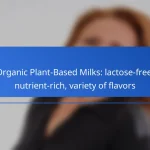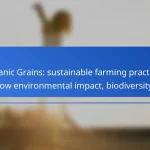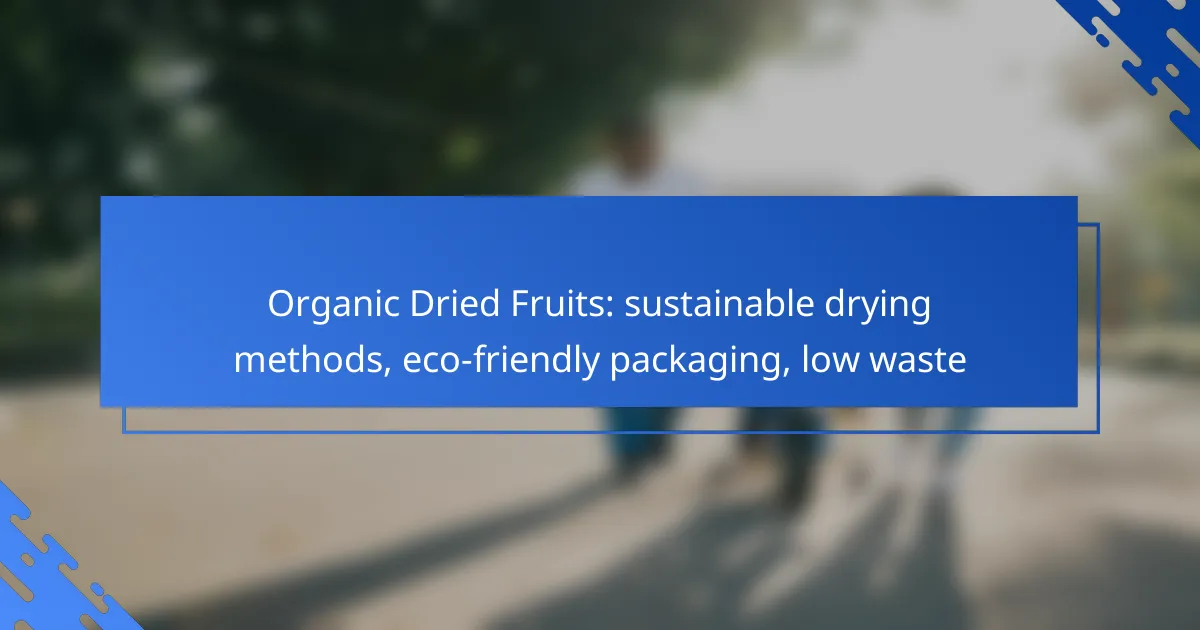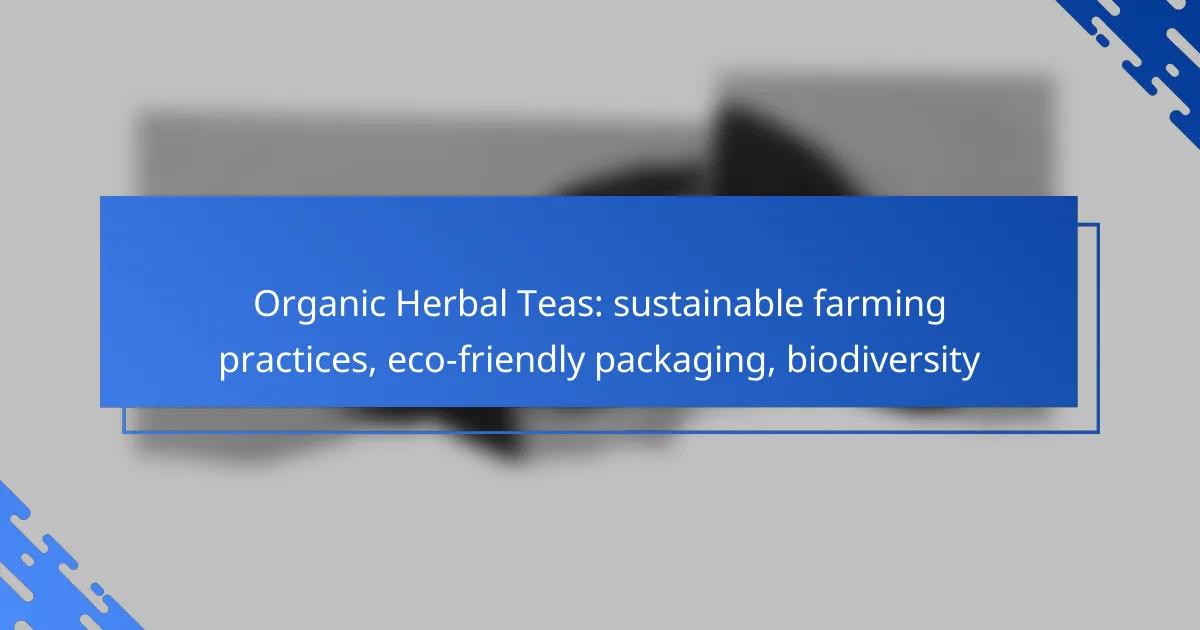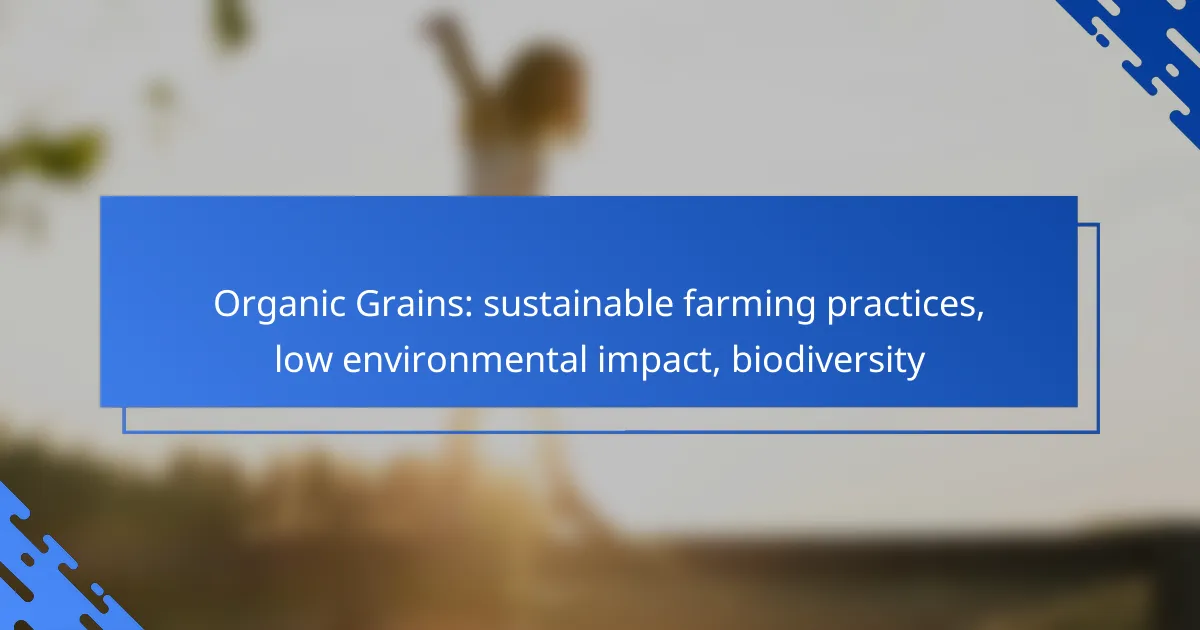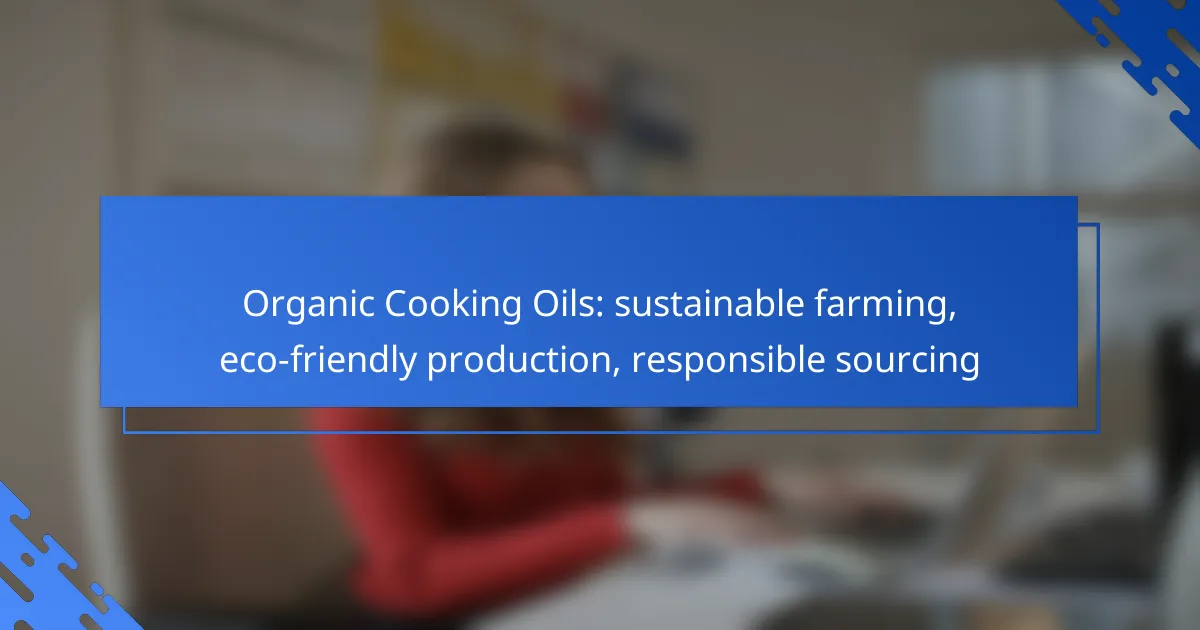Organic dried fruits are produced using sustainable drying methods that prioritize energy efficiency and environmental preservation, ensuring that the fruits retain their nutritional value. Coupled with eco-friendly packaging, these practices significantly reduce waste and promote responsible consumption, making them essential for both producers and consumers. By focusing on low waste strategies throughout the production process, the organic dried fruit industry aims to minimize its environmental footprint while delivering high-quality products.
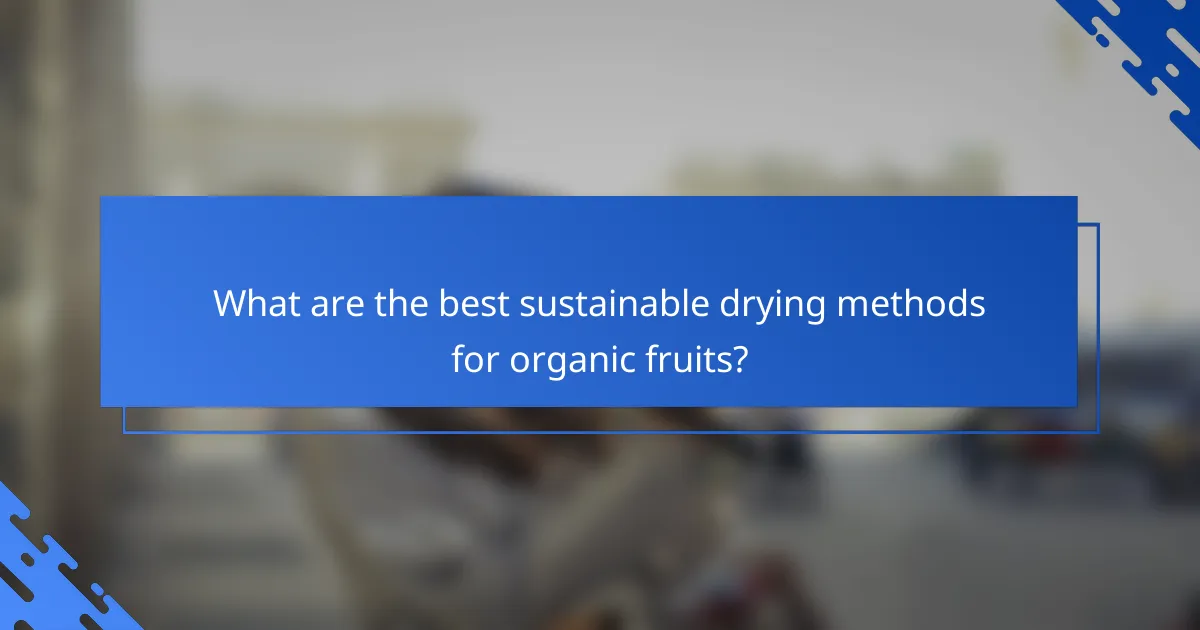
What are the best sustainable drying methods for organic fruits?
The best sustainable drying methods for organic fruits include techniques that minimize energy consumption and environmental impact. These methods focus on utilizing natural resources or renewable energy sources to preserve the fruits while maintaining their nutritional value.
Solar drying techniques
Solar drying techniques harness sunlight to dehydrate fruits, making them energy-efficient and environmentally friendly. This method involves placing fruits on racks or trays in direct sunlight, allowing moisture to evaporate naturally. Ideal for regions with abundant sunshine, solar drying can take anywhere from a few hours to several days, depending on the fruit and weather conditions.
To optimize solar drying, choose a location with good airflow and cover the fruits with mesh to protect them from insects. Regularly check for even drying and rotate trays as needed.
Dehydration with renewable energy
Dehydration using renewable energy sources, such as wind or biomass, is another sustainable method for drying organic fruits. This approach involves using energy-efficient dehydrators powered by solar panels or wind turbines, reducing reliance on fossil fuels. These systems can maintain consistent temperatures, ensuring even drying and preserving flavor and nutrients.
When selecting a renewable energy dehydrator, consider the initial investment and long-term savings on energy costs. Look for models that are certified for energy efficiency to maximize sustainability.
Air drying processes
Air drying processes utilize natural airflow to remove moisture from fruits, making them a low-energy option. This method can be done indoors or outdoors, depending on the climate. Fruits are typically hung or spread out in a well-ventilated area, and the drying time can vary from several days to weeks.
To ensure successful air drying, maintain a dry environment and avoid high humidity, which can lead to spoilage. Regularly check the fruits for signs of mold or uneven drying.
Freeze drying advantages
Freeze drying is a high-tech method that involves freezing fruits and then removing moisture through sublimation. This process preserves the fruit’s structure, flavor, and nutrients more effectively than other methods. Freeze-dried fruits can last for years without refrigeration, making them convenient for storage and transport.
While freeze drying requires specialized equipment and energy, the quality of the end product often justifies the investment. Consider this method for high-value fruits where preserving quality is paramount.
Oven drying efficiency
Oven drying is a practical method for dehydrating fruits at home, utilizing a conventional oven set to low temperatures. This method allows for controlled drying but can be less energy-efficient compared to other methods. Typically, fruits are sliced thinly and spread on baking sheets, with the oven door slightly ajar to allow moisture to escape.
To maximize efficiency, monitor the drying process closely and rotate trays to ensure even heat distribution. Keep in mind that oven drying may require more energy and can lead to higher electricity costs, so it’s best for small batches.
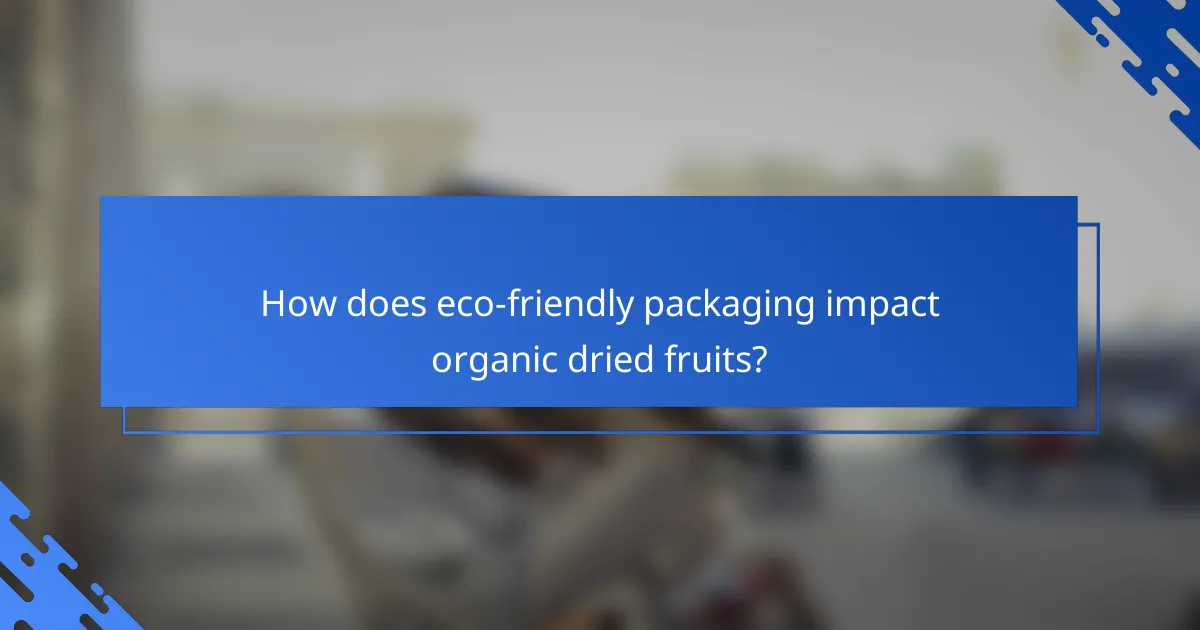
How does eco-friendly packaging impact organic dried fruits?
Eco-friendly packaging significantly enhances the sustainability of organic dried fruits by reducing environmental impact and promoting responsible consumption. It minimizes waste and supports the preservation of the product’s quality, making it a vital consideration for both producers and consumers.
Biodegradable packaging options
Biodegradable packaging is designed to break down naturally over time, reducing landfill waste. Common materials include plant-based plastics, compostable films, and paper products. These options are particularly beneficial for organic dried fruits, as they align with the eco-conscious values of consumers seeking sustainable products.
When selecting biodegradable packaging, look for certifications such as ASTM D6400 or EN 13432, which indicate compliance with compostability standards. This ensures that the packaging will decompose effectively in appropriate conditions.
Recyclable materials for packaging
Recyclable packaging materials, such as glass, certain plastics, and aluminum, can be reused in the production of new products, thus conserving resources. For organic dried fruits, using recyclable materials can appeal to environmentally aware consumers and help reduce the overall carbon footprint of the product.
To maximize recyclability, ensure that the packaging is clean and free of contaminants. Additionally, check local recycling guidelines, as acceptance of materials can vary significantly by region.
Impact of packaging on shelf life
The choice of packaging directly affects the shelf life of organic dried fruits. High-quality, eco-friendly packaging can provide adequate protection against moisture, light, and oxygen, which are key factors in preserving freshness. Materials like vacuum-sealed pouches or foil-lined bags can extend shelf life significantly compared to traditional packaging.
When evaluating packaging options, consider the trade-off between sustainability and preservation. While biodegradable materials may have shorter shelf lives, advancements in technology are improving their effectiveness, making them a viable option for maintaining product quality.
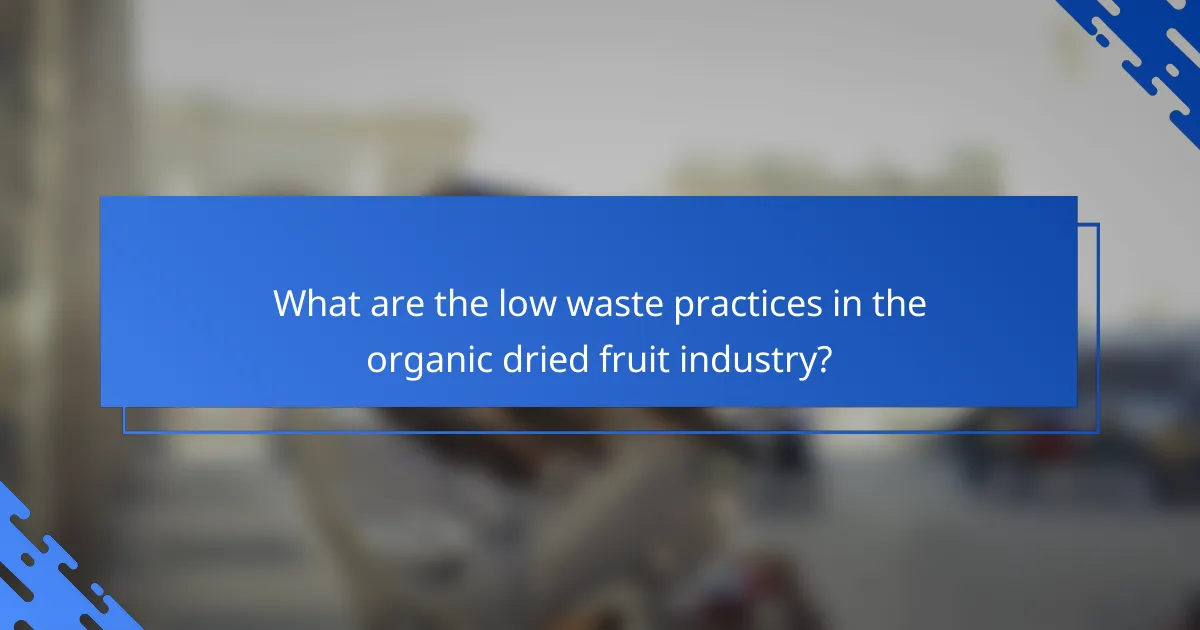
What are the low waste practices in the organic dried fruit industry?
Low waste practices in the organic dried fruit industry focus on reducing waste throughout the production process, from sourcing to packaging. These practices aim to utilize resources efficiently, minimize environmental impact, and promote sustainability.
Utilizing fruit by-products
Utilizing fruit by-products is a key strategy in the organic dried fruit industry to minimize waste. For example, leftover peels and seeds can be processed into snacks, juices, or natural flavorings, ensuring that nearly all parts of the fruit are used. This not only reduces waste but also adds value to the overall production process.
Companies can explore partnerships with local businesses to create innovative products from these by-products, enhancing their sustainability profile while potentially increasing revenue streams.
Minimizing energy consumption
Minimizing energy consumption is crucial for reducing the carbon footprint of organic dried fruit production. Techniques such as solar drying and energy-efficient dehydrators can significantly lower energy use. Solar drying, for instance, harnesses sunlight to dry fruits, which can be particularly effective in sunny regions.
Producers should regularly assess their energy usage and consider investing in renewable energy sources to further decrease their environmental impact. Implementing energy-efficient practices can lead to cost savings in the long run.
Implementing circular economy principles
Implementing circular economy principles involves designing production processes that prioritize resource recovery and reuse. In the organic dried fruit industry, this can mean creating systems where packaging materials are recyclable or compostable, reducing landfill waste.
Producers can adopt practices such as take-back schemes for packaging or collaborating with suppliers who prioritize sustainable materials. This not only enhances brand reputation but also aligns with consumer preferences for eco-friendly products.

What certifications should I look for in organic dried fruits?
When selecting organic dried fruits, look for certifications that ensure quality and ethical practices. Key certifications include USDA Organic, Fair Trade, and Non-GMO Project verification, each indicating different aspects of sustainability and product integrity.
USDA Organic certification
The USDA Organic certification guarantees that the dried fruits are produced without synthetic fertilizers, pesticides, or genetically modified organisms. To qualify, producers must adhere to strict guidelines set by the USDA, ensuring that at least 95% of the ingredients are organic.
When shopping, check for the USDA Organic seal on packaging. This certification not only supports sustainable farming practices but also promotes biodiversity and soil health, making it a reliable choice for environmentally conscious consumers.
Fair Trade certification
Fair Trade certification focuses on ethical labor practices and fair compensation for farmers. Products with this label ensure that producers receive a fair price, which helps improve their livelihoods and supports community development.
Look for the Fair Trade Certified label when purchasing organic dried fruits. This certification often means that the fruits are sourced from cooperatives that prioritize social and environmental standards, contributing to sustainable agriculture and equitable trade practices.
Non-GMO Project verification
The Non-GMO Project verification indicates that the dried fruits are free from genetically modified organisms. This certification involves rigorous testing and traceability measures to ensure that products meet non-GMO standards.
When choosing organic dried fruits, seek out the Non-GMO Project Verified seal. This certification is particularly important for consumers who prioritize natural food sources and want to avoid potential health risks associated with GMOs.

How do I choose the best organic dried fruits for my needs?
To choose the best organic dried fruits, focus on quality, sourcing, and nutritional content. Look for products that are certified organic, free from additives, and packaged sustainably to ensure you are making a healthy and eco-friendly choice.
Assessing quality indicators
Quality indicators for organic dried fruits include appearance, texture, and aroma. Look for fruits that are vibrant in color, have a chewy texture, and possess a natural sweetness without any off-putting smells. Avoid products with excessive sugar or preservatives, as these can diminish the health benefits.
Check for certifications, such as USDA Organic or equivalent local standards, which ensure that the fruits are grown without synthetic pesticides or fertilizers. Additionally, consider the moisture content; ideally, dried fruits should be pliable and not overly dry or hard.
Comparing brands and sourcing
When comparing brands of organic dried fruits, research their sourcing practices. Brands that prioritize local sourcing often support sustainable agriculture and reduce carbon footprints associated with transportation. Look for companies that provide transparency about their supply chains.
Read reviews and check for third-party certifications to gauge the reliability of the brand. Some brands may offer bulk purchasing options, which can be more cost-effective and reduce packaging waste, aligning with eco-friendly practices.
Understanding nutritional differences
Nutritional differences in organic dried fruits can vary significantly based on the fruit type and drying method. For example, sun-dried fruits may retain more nutrients compared to those dried using high heat. Always check the nutritional label for information on calories, sugars, and fiber content.
Consider the health benefits of different fruits; for instance, dried apricots are high in vitamin A, while raisins provide iron. Balancing your selection with a variety of fruits can enhance your nutrient intake and provide a range of flavors and textures in your diet.
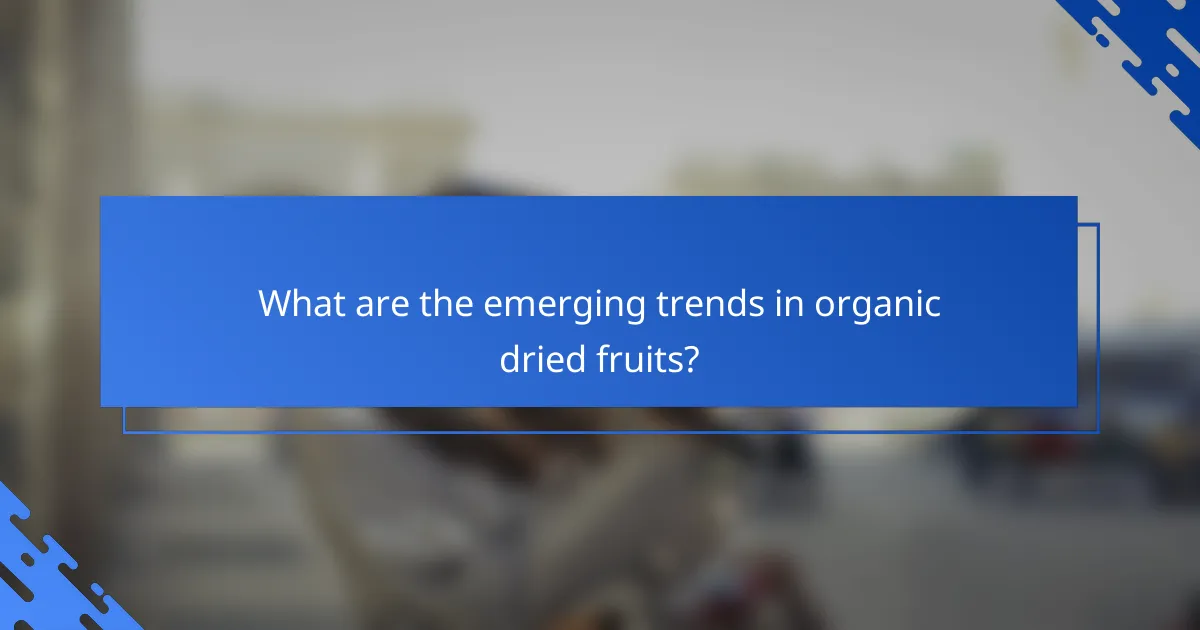
What are the emerging trends in organic dried fruits?
Emerging trends in organic dried fruits focus on sustainable drying methods, eco-friendly packaging, and minimizing waste. These practices not only enhance the product’s appeal but also align with growing consumer demand for environmentally responsible food options.
Innovations in sustainable packaging
Sustainable packaging for organic dried fruits is evolving to reduce environmental impact. Innovations include biodegradable materials, compostable films, and reusable containers that minimize plastic use. Brands are increasingly adopting these solutions to meet consumer preferences for eco-friendly products.
For example, companies are exploring plant-based plastics and recycled paper for packaging. These materials can significantly lower carbon footprints while maintaining product freshness. Additionally, transparent packaging made from sustainable sources allows consumers to see the product while ensuring minimal waste.
When selecting sustainable packaging, consider the lifecycle of the materials used. Look for certifications like FSC (Forest Stewardship Council) or compostability labels to ensure the packaging meets environmental standards. Avoid traditional plastic and opt for solutions that offer both functionality and sustainability.
